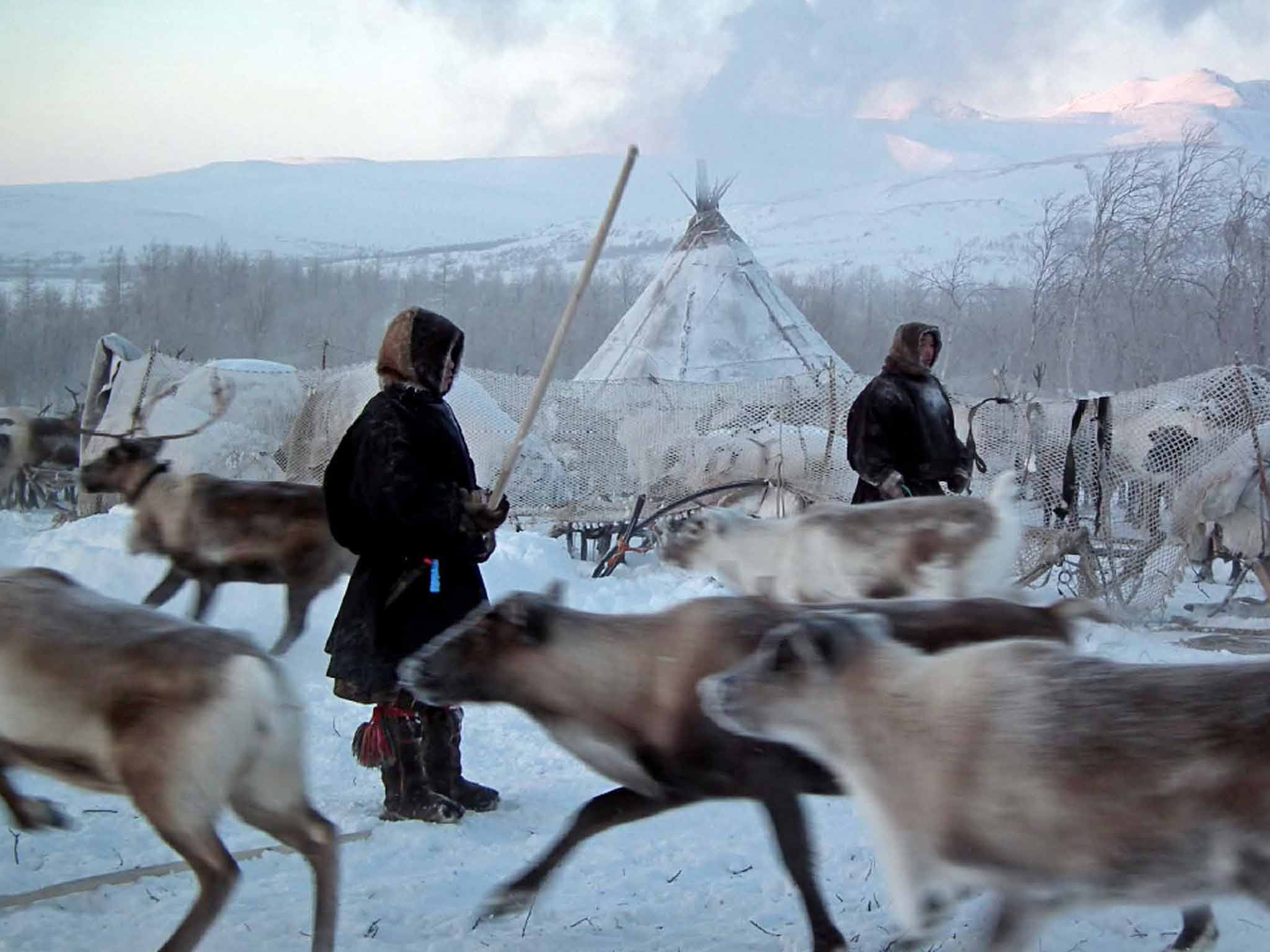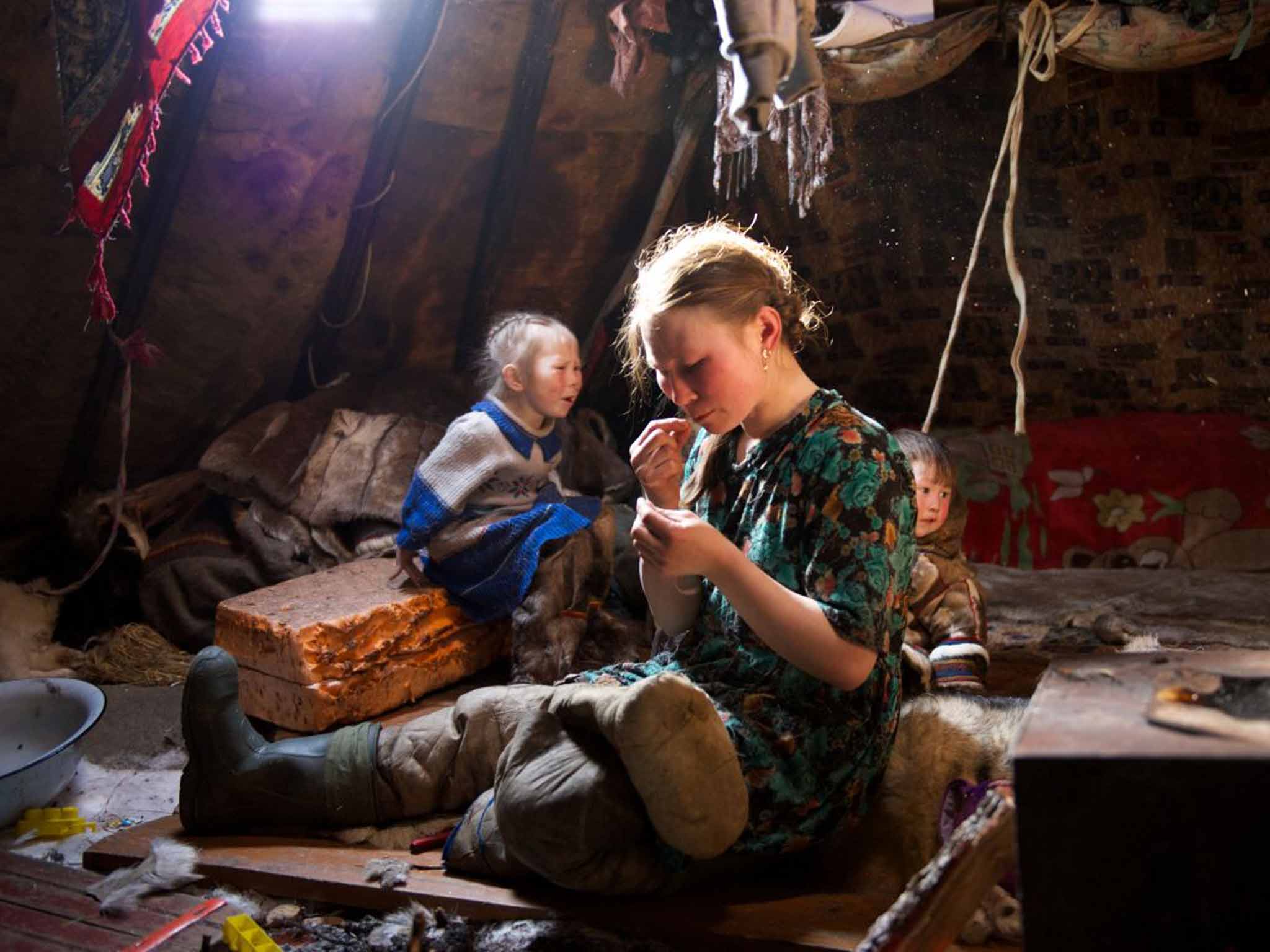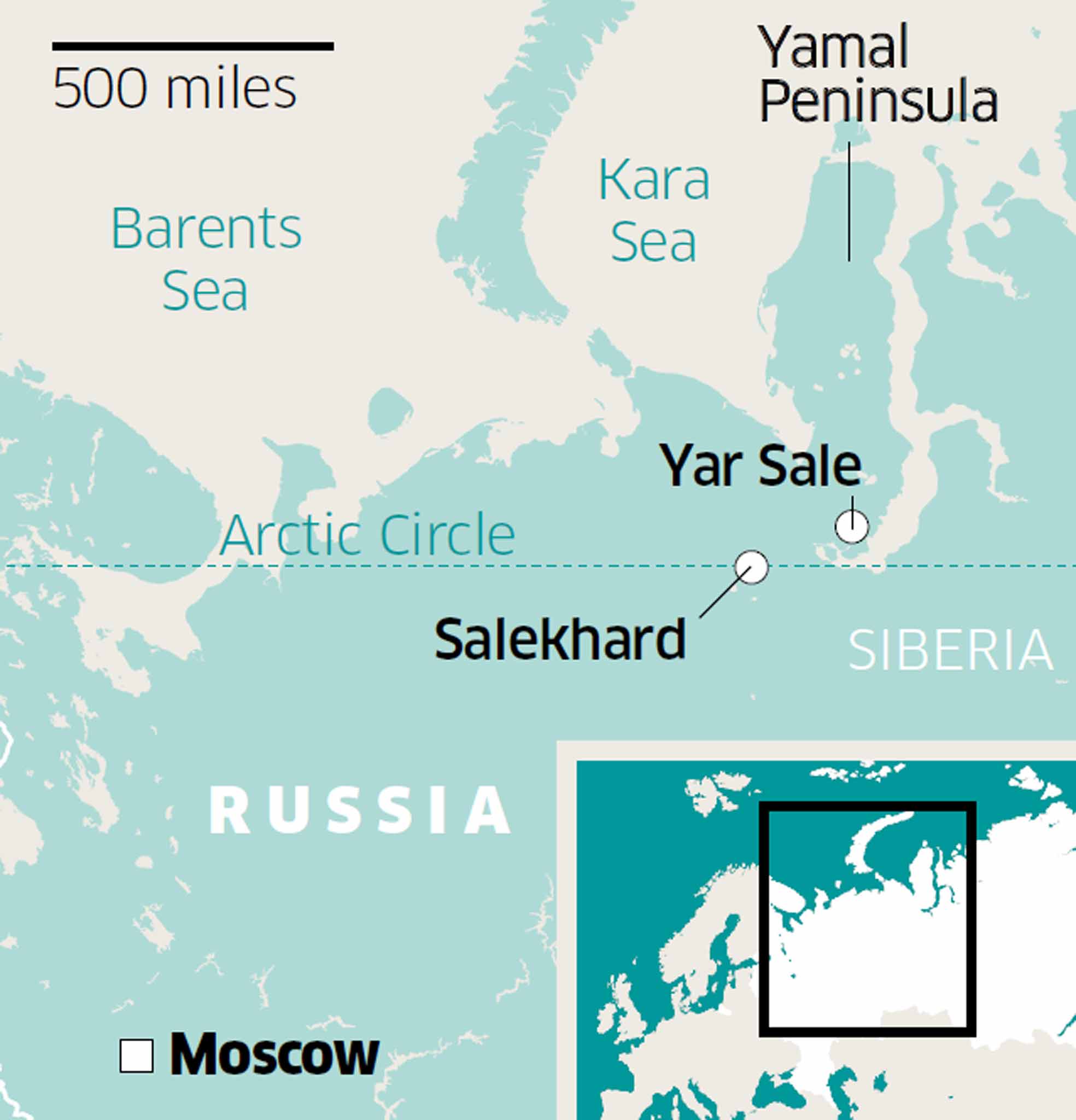Siberia's nomadic Nenets: Home is where the pasture is
As a new BBC series reveals, a nomadic way of life is still viable, and that's what Kate Eshelby found with the Nenets on 'the edge of the world'

Your support helps us to tell the story
From reproductive rights to climate change to Big Tech, The Independent is on the ground when the story is developing. Whether it's investigating the financials of Elon Musk's pro-Trump PAC or producing our latest documentary, 'The A Word', which shines a light on the American women fighting for reproductive rights, we know how important it is to parse out the facts from the messaging.
At such a critical moment in US history, we need reporters on the ground. Your donation allows us to keep sending journalists to speak to both sides of the story.
The Independent is trusted by Americans across the entire political spectrum. And unlike many other quality news outlets, we choose not to lock Americans out of our reporting and analysis with paywalls. We believe quality journalism should be available to everyone, paid for by those who can afford it.
Your support makes all the difference.My pants are down. It's dark and I'm fumbling to undo the numerous layers I'm wearing, without falling into the deep snow. Then out of the starry night, an antler prods my bottom. Before long, I'm surrounded by a group of reindeer, apparently attracted by the salt in my urine. Any notions of privacy seem to have evaded them.
These are the far fringes of the Yamal Peninsula in Siberia's Arctic and for a couple of weeks I'm living here with a family of Nenets reindeer herders. Indigenous to the region, Nenets are among the world's last true nomads. There are around 45,000 throughout Russia of which 12,000 live in Yamal; 7,000 of them migrating 2,000km each year by reindeer-drawn sleighs (the rest stay in settlements). They travel, with the seasons, from the forest tundra south-west of the Yamal Peninsula in Nadym District in mid-March, north up to the Kara Sea in mid-August, where polar bears prowl. Then, they retrace their steps – constantly seeking fresh pastures for their herds.
In the Nenets language, Yamal means "edge of the world" and my journey there certainly lives up to expectation. After reaching Moscow, there's a three-hour flight to Salekhard, the regional capital teetering on the edge of the Arctic Circle. I'm with my fixer, Ed; an Englishman who now lives in Moscow, and speaks fluent Russian, having spent many years living with nomadic groups throughout Siberia. He has also worked with several film crews; the Nenets way of life forms part of Kate Humble's new, three-part BBC2 series, Living with Nomads.
In Salekhard we climb into a Trekol, a monster ATV (all-terrain vehicle) with chest-high wheels. "If we fall through the ice it will float," Ed explains. It is only possible to reach the tundra village of Yar Sale in this way between mid November and mid May, when the river is frozen – there are no roads. From June to October, you'd have to take a ferry.
Seven hours later, we arrive at a wooden bungalow, belonging to a lady called Galina, where we spend the night. Inside, it's so hot I almost pass out. Her family walks around as if dressed for summer, oblivious to the fact that it's minus 25C outside. A cat dozes under a radiator.

Next morning – after what will be my last shower for more than a week – we travel by snowmobile to the nomad's camp, through snow that appears pearlised in the sun. It's night when we finally arrive, and radiant ghost-like figures bounce around the sky. The Northern Lights illuminate two chums – tepee-like tents covered in reindeer skin – and the wooden sleighs that are scattered haphazardly around, some piled with raw meat. All around is nothing but the flat expanse of tundra. An extended family of around 15 Nenets is housed here. Inside one of the chums, Nadia – with her hair in two long plaits – sits sewing, using thread made from reindeer sinew. Achum, her husband, is making a reindeer harness from a mammoth tusk. "There are fossilised remains of mammoths and other ice age giants beneath the permafrost here," Ed explains.
The following day, the family will pack up and move as they do every couple of days. My camera freezes during the night, and my fingers are numb; yet there is no time to delay. The chums need to be dismantled on to the sleighs. But first: a shot of vodka. Vasili gets a bottle from one of the sleighs, though it too has frozen.
Suddenly, without warning, the pace picks up. Hundreds of reindeer stampede towards me, husky dogs yipping behind them. Lassos cartwheel through the air as the men catch certain bulls, shouting "hey ho", and tackling the animals to the ground. "These reindeer have been trained to pull the sleighs," Ed says. "Even at the speed they are running the men can recognise each one."
Using a snowmobile, Achum drives the reindeer, with their towering antlers, towards us. Nenets rub shoulders with the modern world, their traditions now incorporating mobile phones and generators. In spite of more than 70 years of communism and the construction of a gas pipelines across their land (the world's biggest gas fields are here), their way of life carries on.
Before the migration begins, it's time for tea. We sit in the snow, dunking sweet biscuits into the hot tea from blood stained cups. Raw reindeer meat is eaten hungrily, so the snow is also red. "It's warm today, we're having a picnic!" Vasili exclaims. He's serious. While it's minus 20C today, temperatures often plummet below minus 50C.

Nadia feeds a biscuit to a pure white reindeer with piercing blue eyes. "All tundra Nenets families have several reindeer which they hand-rear,'" she explains. "They sleep in our chums and are loved like family." These are young deer that have lost their parents; they are treated like pets until they are strong enough to be released into the herd. They will never be killed by the family, but given to another when too old to migrate.
Soon, we're off. The transport reindeer are dressed with bells and regalia by the women, who themselves are resplendent in sunglasses, big sumptuous white hats, and long reindeer fur coats with embroidered trims.
The chain of sleighs glides off; one after another; each with a lady guiding the leading reindeer with a long pole, like a scene from Narnia. They will not pass another village for six months, so they carry everything they need in hard-carved wooden chests on the sleighs. In front, the rest of the herd dissolves into the distance as we head into a snowstorm.
The vast, open landscape dwarfs the argysh (train of sledges), as it snakes across the bright whiteness. We pass outbursts of silver birch and fir trees under burly blue skies, before the bare tundra arrives. The cold sinks its teeth in.
Vasili, as head of the camp, chooses the next base, and wooden floorboards are placed on the icy ground, resembling a modern art installation isolated in the snow. Poles are then erected before the Nenets spiral around them like a maypole as they haul up the covers.
Days are spent alternating between these magnificent migrations and life at the camp. One day, Achum points at the sacred sleigh. An idol sits on top of it, dressed in reindeer hide. "It protects our reindeer," Achum says. "Inside the sledge are wolf, sable, and polar bear furs which defend us from evil spirits and give us good luck while hunting."
Nenets life is rich with beliefs. Between the central stove and the back of the chum, there is an imaginary line, which no woman can cross without serious consequences.
Another day we come to a chum, with bloodied reindeer skins hanging outside, and rosy-cheeked children playing, with scant regardd to the cold. The couple has seven children. One must be just days old and lies swaddled in reindeer fur. "When we're born we are wrapped in fur, when we die our body is laid under fur; and in between all our life is spent living with, eating and wearing reindeer," Vasili explains.
Talk inevitably turns to reindeer: the families discussing their herd's health. "Last November the weather was warmer than usual, melting the snow, and then it froze so the reindeer couldn't reach the lichen," Ed tells me. "Thousands were lost. Weather patterns are changing."
Vasili has his own explanation of why. "Missionaries tried to convert us, but failed," he says. "In the Polar Ural mountains, however, they have had some success. This is why they lost more reindeer than us, because they no longer follow our Nenets beliefs."
People sometimes appear out of the whiteness, although it seems we are far from anyone. One evening, hunters, pursuing sable and Arctic fox, visit our chum. Vodka shots, and a feast of frozen fish and bread, last late into the night. Another day we pass Brigade 4, one of the privately-run "state" camps, where we are invited inside for food. Under Soviet collectivisation, nearly all the reindeer were confiscated and Nenets were forced to work for state camps. Today, most have returned to their traditional way of life while those who remain in state camps favour them for the security offered.
The chum is full of skins, lamps and cooking pots; fur boots hang to dry above the central stove. A doll, dressed in handmade Nenets clothes, lies on reindeer furs on the ground, on which the whole family sleeps each night, together in a long line. "The doll represents an ancestor," Ed says. "They always accompany them during their journey."
The brigadier and his men later speed up to our camp on snowmobiles, gold teeth gleaming. They have come to separate off their reindeer from Vasili's. Men career around, falling into the snow as they lasso reindeer.
On my last day with Vasili's family, the light is golden as we arrive at camp. I marvel at the tundra's beauty. Everyone is moving fast; the chums are up quickly and then that glorious moment – the fire is lit. The thick, heavy reindeer fur door thumps down behind me, and the warmth on my face is delicious.
Outside the reindeer are digging down for lichen under the snow. Nadia spreads out a bright plastic tablecloth and we tuck into supper. Instant mashed potato has never tasted so good.
'Kate Humble: Living with Nomads – Siberia' is on BBC2 on Thursday at 11.20pm and BBC iPlayer now
GETTING THERE
An 11-day trip with Ed's company, Yamal Peninsula Travel (yamalpeninsulatravel.com), costs from £4,150pp, including all transport from Moscow to a reindeer herding family in Yamal, a Border Zone permit for Yamal, all accommodation and meals while living with the family, and a fixer to accompany you throughout. Flights to Russia are not included.
Kate Eshelby travelled from Heathrow to Moscow with British Airways (0344 493 0787; ba.com), and from Moscow to Salekhard with Yamal Airlines (yamal.aero).
Red tape
British passport-holders require a visa to visit Russia (£88.40), available from VFS Global (0905 889 0149; ru.vfsglobal.co.uk). Visitors must apply in person at the application centres in London or Edinburgh.
Join our commenting forum
Join thought-provoking conversations, follow other Independent readers and see their replies
Comments